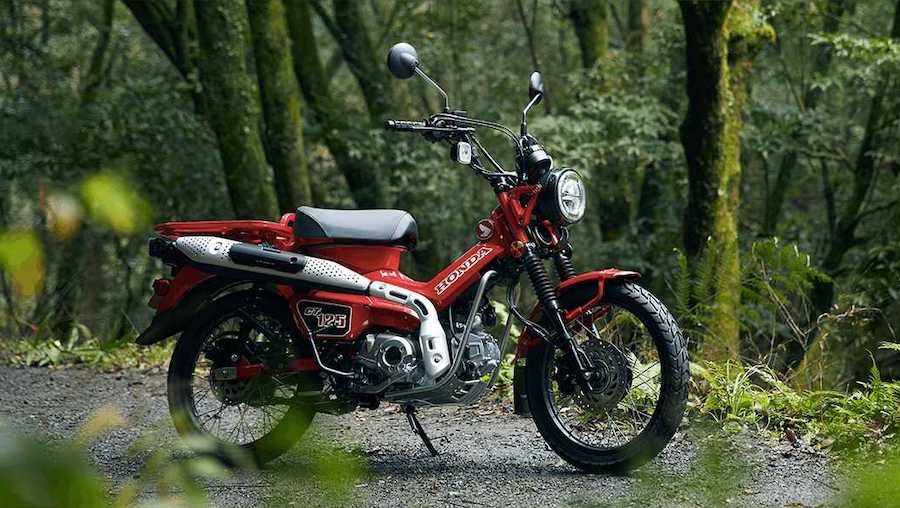Honda officially introduced the new 2021 CT125 Hunter Cub in March, 2020, marking the return of its famous Trail Cub series. Just like its CT ancestors, the new Hunter Cub is a spinoff of the popular Super Cub based on the same chassis and engine but armed with the necessary components to up its off-road game.
While we patiently wait for Honda to (hopefully) confirm that the model will come to the U.S., we decided to take a closer look at some of its features. Here are four things you should know about the new 2021 Honda CT125.
1. The Big Comeback
While the Super Cub-based Honda CT125 is an entirely new model, the CT itself isn’t new. Team Red has a long—and absolutely confusing—history of producing tiny trail bikes. It first introduced its Trail Cub series in the mid-1960s. That's the easy part because anything after 1964 is a bit of a mess.
See, through the years, the naming convention varied, "CT"and "Trail" were used to identify completely unrelated models, and some of the names were even reused (like CT90) with little to no consideration for motorcycle historians.
Let me give you an example. Before settling for the displacement-related CT90 model name, Honda referred to its 90cc trail as the CT200. In North America, however, the CT90 was called Trail 90. How about the CT70? No, it wasn't called "Trail 70" on our side of the pond. The CT70 was actually the ST70's North American name. Go figure.
And don’t you dare confuse Trail Cub with Mini Trails—they’re totally not the same thing. Mini Trails include bikes like the Z50 (the early day Monkey).
2. It’s Pretty Much A Scrambler Cub
Like its CT ancestors, the CT125 is the Super Cub's modern trail-friendly variation. Sort of. Think of it as a modern-day scrambler—it won’t replace a proper dirt bike but it can take more abuse than its urban counterpart.
To face the trails, the CT125 is armed with taller suspension with 4.3 inch of travel at the front and 4.8 inch of travel at the back (versus 3.5 and 3.6 inch of travel respectively on the Cub).
It also features an underbelly sump plate to protect the tiny engine as well as a high-set exhaust with a protective plate to avoid any risks of drowning should you have to deal with puddles and streams. The look is completed by a set of 17-inc wire spoke wheels.
3. It’s Beefier
The CT125 is also heftier than the C125. The wheelbase is longer at 49.4 inches and the saddle is taller at 31.5 inches (versus 48.9 inches wheelbase and 30.7 inches seat height on the Cub). It offers 6.5 inches of ground clearance and a 1.4-gallon fuel tank. At 264 pounds, it’s 24 pounds heavier than the 240-pound Cub.
4. The Engine Needs No Introduction
At their core, both Cubs share the same 125cc, air-cooled, four-stroke thumper with a 52.4 mm bore, 57.9 mm stroke, and 9.3 compression ratio.
The tiny single is teamed with a four-speed semi-automatic transmission and produces 8.7 horsepower and 8.11 lb-ft of torque.
Related News



